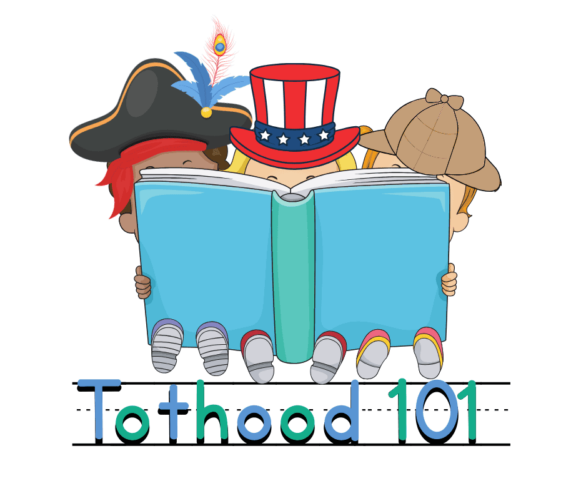
Written by Debbie Brown | Updated April 12, 2024
Generations of preschoolers have grown up memorizing the phrase, “Never talk to strangers.” As a preschooler, they learn about stranger danger in books during storytime. They sing songs about tricky people, with their favorite- fun-loving characters like Elmo or Barney the Dinosaur.
As a preschool teacher, it was a lesson I taught every year.
But we were all wrong! Me. Barney. Even Elmo!

This post may contain affiliated links. For more information, please read my full disclosure.
Activities for Preschoolers Instead of Stranger Danger
What we should be teaching preschoolers instead, is how to recognize safe strangers – stranger awareness. Teaching stranger safety in an age-appropriate manner is one of the best things parents can do to lay the foundation for building on later.
The National Center for Missing & Exploited Children says that even though stranger danger is short, simple and rhymes, it’s not the most effective lesson for children.
Yes, not everyone is nice and there are tricky people out there but the age of your child matters. Child safety rules for preschoolers are going to be different than they are for older children. At such an early age, preschoolers should be supervised and have a trusted adult keeping a good eye on them, especially outside the home. But there are still valuable safety lessons they can learn.
As they get older, children spend more time away from their parent’s constant watchful eye – at a friend’s house or outside playing. Elementary school-age children may be ready to learn more detailed stranger danger lessons that explain potentially dangerous situations they can get into. You know your child best.
How Do You Explain Stranger Awareness to a Preschooler?
First, let’s define stranger. Isn’t a stranger anyone you don’t know?
Many preschoolers are already shy around adults. What we need to teach them at this age is to identify safe strangers.
If your little 4-year-old gets separated from you in the mall, what are they to do? Everyone is a stranger!
Young children, at this age, need simple lessons.
- They need to learn there are different types of strangers – some are safe strangers and some are strangers we don’t know.
The fact is, your little one has been and will continue to interact with strangers their whole lives. They are meeting new people all the time. You’re friends, people at the grocery store. The zookeeper. Out-of-town relatives. The nursery worker or Sunday School teacher at church. They need to learn to identify which of these people are safe strangers and which are not.
- They also need to learn that you can’t tell good people from bad people just by looking at them. Youngsters at this age think bad strangers will look bad. They get this, in part from TV shows and books. Even if your child’s not familiar with the characters of a story they can probably point out the bad guys like Scar, Ursula, and the Grinch. Why? Because they look bad.
Instead of causing stranger anxiety, we can teach them wisdom and common sense for dealing with people they don’t know.

Preschool Friendly Definition
Safe Strangers
- A safe stranger is someone your parents (or a trusted adult) know or introduce you to.
- Community helpers like doctors and firefighters are also safe strangers.
Not Safe Strangers
- People you and your parents( or a trusted adult) don’t know – even if they look nice and friendly.
Trusted Adult
- Someone you know and your parents trust such as family members, family friends, or a Sunday School Teacher. So, if your Sunday School Teacher introduces you to a new teacher, that would be a safe stranger.

Here are some interactive ways your child can practice identifying safe strangers.
1. Identifying Safe Strangers
Help your child identify safe strangers and community helpers. Point them out as your out on trips or errands. Examples of safe strangers would be:
- anyone a trusted adult they know introduces them to
- another family member (relatives from out of state)
- Mommy and Daddy’s friends
- community helpers like:
- teachers and child care workers
- librarians
- police officers
- cashiers
- mail carrier
- bank tellers
- store clerks
- medical professionals – doctors, dentists, etc)
2. Play the ‘Do You See’ Game
Children love games! ( Anything is a game to a preschooler if you call it a game -lol) When you are out in a public place with your little one, make a game of practicing to identify safe strangers.
Ask questions like:
- Do you see a mommy?
- Do you see a police officer?
- Do you see someone who works here? (Someone behind a counter, someone with a uniform on?)
- Do you see a person with a nametag?

3. Practice, Practice, Practice
After you’ve spent some time identifying safe strangers, here’s a fun way to take it up a notch.
While you and your little one are enjoying time together, sitting at the mall sharing ice cream …or an Aunt Annie’s pretzel (just a lucky guess – lol) practice playing, ‘What would happen if mommy got lost in the mall?’ Who would they ask for help?
For preschoolers, it’s probably easier for them to find a mommy, but they should practice finding other safe strangers in case a mommy’s not around. Also, teach them to stay in the area – this is their safe place.
Let them point out people they would ask for help without leaving the area.
- a mommy
- people in uniforms working
- people behind a counter
4. Play Safe Stranger / Not a Safe Stranger Card Sort Game
To help young learners reinforce the concept of safe strangers and not safe strangers I’ve put together a game you can share with your child. It’s FREE. Just click on the download button below.

Keeping Your Little One Safe
To summarize here are 3 tips to help you keep your preschooler safe:
1. The best prevention is to always keep a good eye on your preschooler ( not your phone) at all times, especially in public places.
2. Teach your child that you can’t tell good strangers from bad strangers by the way they look.
3. Teach your child to never wander or, run away from you in a public place or try to play hide-and seek while in places like stores or the mall.
4. Have simple rules in case you become separated:
– Teach your child to stay in the area
– Look for a mommy to help them
Build on These Stranger Safety Lessons
As your child grows older and is away from you more, you will want to build on these safety lessons and have ongoing discussions as new situations arise. By elementary age, stranger danger will be more age-appropriate and they will be better able to understand when you explain about tricky people and the fact that not everyone is nice.
But for preschoolers, these tips and your watchful eye will be a big part of keeping your little one safe.

More Great Resources
Here are some more great resources you may find helpful both now and as your child gets older.
First, here’s a short video clip with some wonderful advice from Dr. Annie Zimmer, a pediatrician at Boys Town Pediatrics.
Stanger Danger
- How To Teach Your Kids About ‘Stranger Danger’ (Without Scaring the Daylights Out of Them) by Cleveland Clinic
- Protect Yourself Rules – A Friendly Stranger Youtube video from Barbara Sinatra Children’s Center Foundation
- Safety Town Activity: Stranger Danger by Euclid Police Department ( this has a fun free Safe Strangers Coloring sheet)
- Rethinking “Stranger Danger” by Kidz Smart National Center for Missing & Exploited Children
- Not Just Stranger Danger: How to Talk to Your Kids About ‘Tricky People’ by Chicago Parent
Stranger Danger for Special Needs
- Stranger Safety for Your Special Needs Child by Children’s Hospital of Philadelphia
- How We Teach Special Needs Kids About Stranger Danger by Cutting Edge Pediatric & Adult Therapy
Getting Lost
- Preventing Kids from Getting Really Lost by Parent Guide News
- 5 Things You Need to Teach Your Kid About Getting Lost by Today’s Parent
- How to Teach Your Kids What to Do If They Get Lost by VeryWell Family
- “Help, I’m Lost!” How to Teach Your Child What to Do If He’s Lost by Kindercare
Family Code Word
- Family Safety Code Words by Reved Up Kids
- Why Code Words Are Key to Your Family’s Safety by Good Housekeeping
Stay Safe! 😊
Be sure to also check out:
- 5 Best Family Movie Reviews
- Teaching Preschoolers How to Wash Their Hands
- A Mother’s Prayer for Her Child

DEBBIE BROWN | Owner and Curriculum Designer
Hi! I’m Debbie Brown. I created Tothood 101 because I’m passionate about sharing preschool activity ideas, and resources that I’ve gleaned from my 20+ years of experience teaching preschoolers at home and in the classroom. My goal is to encourage, guide, and help inspire you to make learning SUPER FUN for your preschooler at home! Check out the ABOUT page to learn more.
CONNECT WITH ME!



Great post! It’s so true. We forget how literal kids can be, so of course when we say “don’t talk to strangers” we mean except for ones that will help you, but kids don’t know that!
I love how you mention to practice too. It needs to be familiar enough that they know what to do when they need to!
Libby, thank you for your kind words.